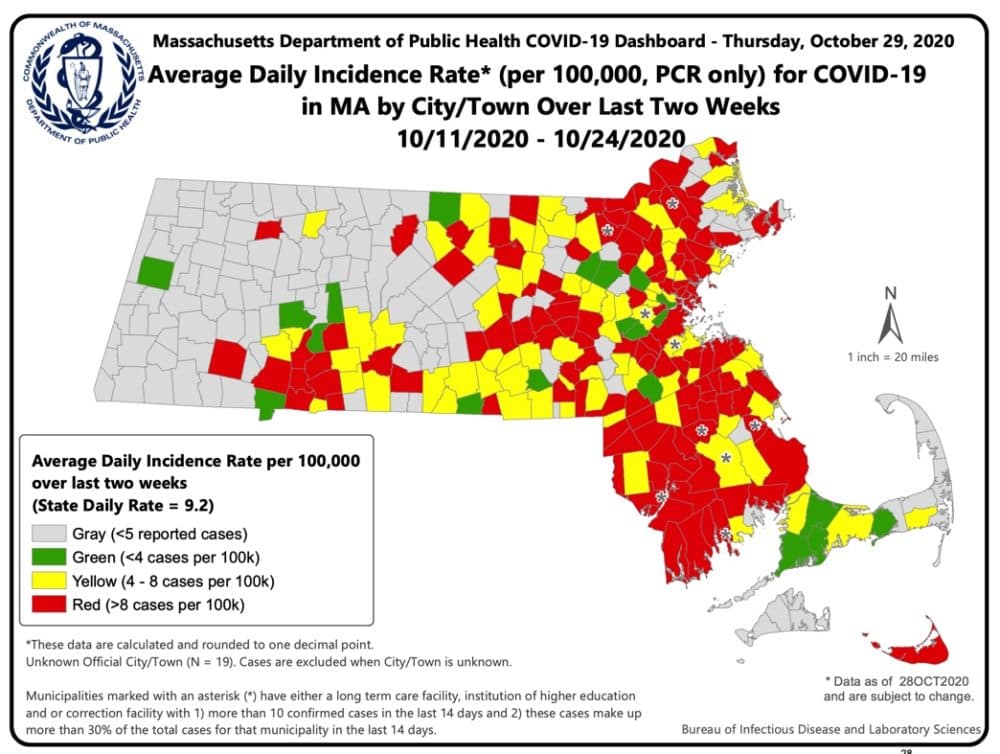Advertisement
Coronavirus Coverage
121 Mass. Communities Now In Highest Risk Category For Virus
More than one-third of the cities and towns in Massachusetts now stand in the Department of Public Health's highest risk designation for COVID-19, while the statewide incidence rate increased again in the latest weekly report.
The state's color-coded system counts 121 municipalities in the red, representing an average daily incidence rate of 8 cases per 100,000 or higher over the past 14 days, in Thursday's update.

DPH officials said they added 54 communities to the red this week: Agawam, Athol, Bedford, Bellingham, Beverly, Billerica, Blandford, Bolton, Braintree, Bridgewater, Brimfield, Cohasset, Danvers, Dartmouth, Dedham, Dighton, Dover, Dracut, East Bridgewater, Fitchburg, Foxborough, Freetown, Gardner, Georgetown, Granby, Hubbardston, Lakeville, Leominster, Littleton, Mansfield, Medford, Mendon, Nahant, Nantucket, Newburyport, North Attleborough, Northborough, Norton, Palmer, Peabody, Salisbury, Southborough, Swansea, Taunton, Tewksbury, Townsend, Wareham, West Boylston, West Springfield, Westborough, Westwood, Whitman, Wilmington, and Winchester.
Another 10 communities — Mattapoisett, Middleborough, Millville, Milton, Monson, Oxford, Scituate, Somerville, Swampscott and West Newbury — had been in the highest-risk category last week but were downgraded to a lower level with Thursday's update.
Rising virus cases have prompted some communities to shift schools online and forced other communities to take a step back in the state's economic reopening schedule, though Gov. Charlie Baker has not yet indicated plans for reimposing more intense statewide restrictions.
Based on the increase in case rates, 15 cities or towns must revert to the first step of phase three in the reopening plan starting Monday: Abington, Berkley, Canton, East Longmeadow, Fairhaven, Fall River, Hanover, Hanson, Hingham, Marshfield, Milford, Pembroke, Rockland, Wakefield and Weymouth.
In phase three, step two they had been permitted to reopen indoor performance venues, resume many recreational activities, and expand outdoor gathering limits in public settings.
The latest weekly report now includes data on individual clusters, helping track whether a community's accelerated spread is linked to a specific incident such as a party that prompted transmission. Communities where identified clusters resulted in more than 10 cases and at least 30% of the municipality's total cases over the past 14 days are marked with an asterisk.
The statewide average daily incidence rate climbed to 11.8 cases per 100,000 residents in Thursday's report, up from 9.2 last week and 8.7 a week before that.